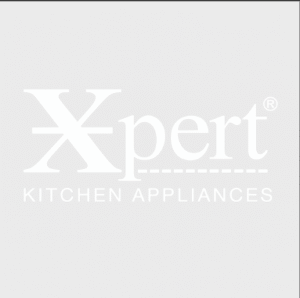As the cryptocurrency landscape continues to expand in 2025, so too does the importance of secure storage. From newcomers purchasing their first digital asset to seasoned DeFi veterans managing diverse portfolios, everyone faces the same core question: Where should I store my crypto to keep it safe?
In the world of crypto, three primary storage solutions dominate the conversation—hot wallets, cold wallets, and self-custodial wallets. Each has its strengths, risks, and ideal use cases. In this guide, we’ll break down the pros and cons of each, helping you determine the safest option for your crypto assets, and reveal what to look for in the best hot wallet for crypto and the growing relevance of self-custodial wallets.
What Are Hot Wallets?
Hot wallets are digital wallets connected to the internet. They come in the form of mobile apps, browser extensions, or desktop programs, and are popular for their convenience and quick access to funds.
Pros:
-
Real-time access: Great for traders and frequent users who need to move assets fast.
-
User-friendly interfaces: Many hot wallets offer sleek, intuitive UIs designed for ease of use.
-
Integrated DApps: Most support DeFi applications, NFTs, and swaps directly within the wallet.
Cons:
-
Vulnerability to hacks: Because they’re always online, hot wallets are prime targets for phishing, malware, and cyber-attacks.
-
Dependent on third parties: Some are custodial, meaning the provider holds your private keys—not ideal from a security standpoint.
When selecting the best hot wallet for crypto, look for non-custodial options that offer biometric access, encrypted backups, and multi-chain support. Wallets like Plus Wallet stand out in 2025 by offering swap-to-earn features, multi-chain interoperability, and complete user control over private keys—all within a hot wallet environment.
What Are Cold Wallets?
Cold wallets, or hardware wallets, are physical devices that store your crypto offline. Since they aren’t connected to the internet by default, they offer a much higher level of protection against online threats.
Pros:
-
Maximum security: Immune to most cyber-attacks, including phishing and malware.
-
Ideal for long-term storage: Perfect for holding large sums of crypto or HODLing assets.
-
Supports multi-signature access: Adds extra layers of protection.
Cons:
-
Less convenient: You must connect your device to a computer or smartphone to make transactions.
-
Higher cost: Hardware wallets typically require an upfront purchase, which may not suit everyone.
-
Risk of physical loss: If not backed up, losing the device or recovery seed means your assets are gone forever.
Cold wallets remain the gold standard for institutional-grade storage, but their usability can be limiting for active traders.
What Are Self-Custodial Wallets?
Self-custodial wallets (also known as non-custodial wallets) give users complete control over their private keys. This category can include both hot and cold wallets—but the core feature is the same: you, and only you, control your funds.
Pros:
-
Total ownership: No third party can freeze, access, or confiscate your assets.
-
Decentralization at its best: Aligns with the ethos of blockchain—trustless, permissionless, and borderless.
-
Enhanced security with smart recovery: Many modern self-custodial wallets use social recovery, multi-signature authorization, and biometric security.
Cons:
-
Responsibility lies with the user: Lose your recovery phrase, and your assets could be unrecoverable.
-
Less support: Since you control everything, there’s no centralized customer service to fall back on.
The demand for self-custodial wallets is booming in 2025, especially with growing regulatory scrutiny and centralized exchange failures. These wallets empower users to secure their funds independently while integrating with DeFi protocols, NFT marketplaces, and multi-chain assets.
Platforms like Plus Wallet are pioneering self-custodial innovation—offering seamless cross-chain swaps, swap-to-earn rewards, and airtight security features—making it a top choice for those who value autonomy and security in equal measure.
Which One Is the Safest?
Here’s a breakdown based on typical user needs:
| Wallet Type | Best For | Security Level | User Control |
|---|---|---|---|
| Hot Wallets | Active traders, daily users | Medium | Medium to High (if self-custodial) |
| Cold Wallets | Long-term holders, institutions | Very High | High |
| Self-Custodial | Security-conscious individuals | High to Very High | Very High |
While cold wallets offer unparalleled security, the rise of feature-rich self-custodial wallets is bridging the gap between protection and convenience. For many, the safest setup may involve using both: a cold wallet for long-term storage and the best hot wallet for crypto activities like trading, staking, or NFT management.
Final Thoughts
In a world where digital assets are growing in value and relevance, choosing the right wallet is more than a technical decision—it’s a commitment to personal financial sovereignty.
Whether you opt for the airtight security of a cold wallet, the flexibility of a hot wallet, or the independence of self-custodial wallets, understanding your own habits and risk tolerance is key. The best wallet isn’t one-size-fits-all—it’s the one that fits your lifestyle while keeping your assets safe.
As 2025 continues to shape the future of decentralized finance, one thing is certain: the tools for safe and secure crypto storage are more advanced and accessible than ever before.
- Hot Wallets vs Cold Wallets vs Self-Custodial Wallets | Safest Crypto Storage in 2025
- Explore the pros and cons of hot wallets, cold wallets, and self-custodial wallets. Discover which offers the safest crypto storage and find the best hot wallet for crypto in 2025.
- self-custodial wallet, best hot wallet for crypto, best crypto wallet, non-custodial wallet, best crypto wallet app, secure crypto wallet
Related posts:
 Nutrition and Wellness Programs in Assisted Living Communities in Oakville
Nutrition and Wellness Programs in Assisted Living Communities in Oakville
 Dresses Dry Cleaner services Lisle, IL: BY Napervalue Cleaners
Dresses Dry Cleaner services Lisle, IL: BY Napervalue Cleaners
 Easy EMI Card: Your Go-To Solution for Easy Monthly Payments
Easy EMI Card: Your Go-To Solution for Easy Monthly Payments
 Thermal Imaging: Revolutionizing Detection Through Infrared Technology
Thermal Imaging: Revolutionizing Detection Through Infrared Technology
 What Is Procurement Consulting and Why Does Your Business Need It?
What Is Procurement Consulting and Why Does Your Business Need It?
 Future of the CV Depot Charging Market: Powering the Next Phase of Commercial Fleet Electrification
Future of the CV Depot Charging Market: Powering the Next Phase of Commercial Fleet Electrification
 A Comprehensive Guide to Bilge Cleaner Products and Their Benefits
A Comprehensive Guide to Bilge Cleaner Products and Their Benefits
 CPT vs ICD-10 Codes: What Every Medical Biller Needs to Know
CPT vs ICD-10 Codes: What Every Medical Biller Needs to Know








